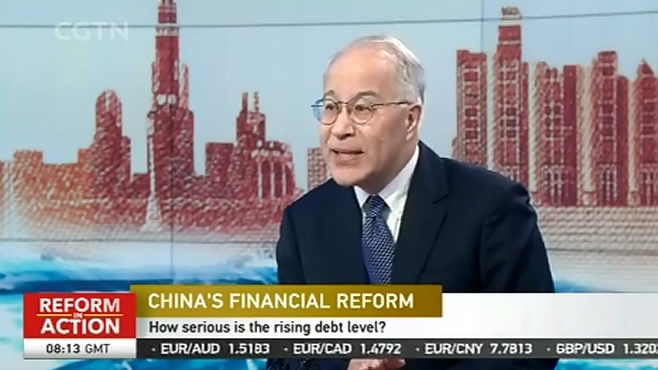
Business
21:33, 11-Oct-2017
Reform in Action: China’s financial sector toward openness and stability
By CGTN’s Zou Yun

China's top leadership has rolled out a string of tightening measures, targeting shadow banking and other undesirable practices that pose a threat to China’s financial markets.
"Money and investment have been circulating solely within the financial sector, instead of stimulating China's real economy in the long run," said Hu Yuwei, research fellow at the China Institute of Finance & Capital Markets.
China’s fast-growing online finance is also seeing tighter regulation. Peer-to-peer lending firms were banned from holding deposits themselves last August, and had to channel all their funds through banks. Public fundraising through cryptocurrency was also suspended last month.
At the national financial conference in mid-July, the Chinese government announced plans to establish a new committee on financial stability and development, to better coordinate financial policies and help draft rules to fill regulatory gaps.

“Finance is becoming very complicated. Somehow it's outside the responsibility of certain financial regulators. That's why they need to set up such a platform to strengthen coordination and cooperation between all the relevant financial bodies,” Hu said.
The conference also stressed on the important role of finance in supporting the development of real economy. It encouraged firms to raise capital directly from the market to lower capital costs, and called for banks and financial institutions to attend to small and medium-sized companies.
Meanwhile, improving stability is not slowing down China’s long-time opening-up policy. The mainland-HK Bond Connect was initiated in July to allow foreign investors trade Chinese bonds from their Hong Kong accounts.
In the coming years, China will also deepen reforms of the yuan's exchange rate formation to make it a widely-accepted currency. China's financial policies will fit into the country's Belt and Road Initiative.

While the road map is clear, experts say challenges remain both at home and overseas, as China re-organizes and globalizes its financial market.
International financial institutes, including the World Bank and IMF are extremely concerned about China’s debt risk.
Current Affairs Commentator Einar Tangen stressed the necessity for the government to crack down on debts and create a healthier growth path, but he also noted that China’s overall debt is not that big a problem in terms of individual debt and income.
He said the United States has almost 60,000 US dollars of debt per person, and their median income is about a quarter of that. China, however, has 1,500 US dollars per person in debt, and the median income is 1,700 US dollars.
Moreover, China has a rapidly growing middle class and also a series of anti-poverty measures in place.
“It is not a great idea to put your preconceptions about how your economy works, and say this is how China’s economy works. They are just apples and oranges,” said Tangen.
(Chen Tong and Gao Songya also contributed to the story)
Read more:

SITEMAP
Copyright © 2018 CGTN. Beijing ICP prepared NO.16065310-3
Copyright © 2018 CGTN. Beijing ICP prepared NO.16065310-3